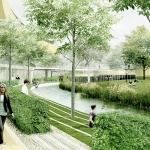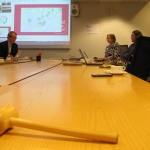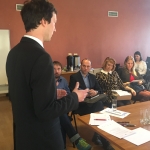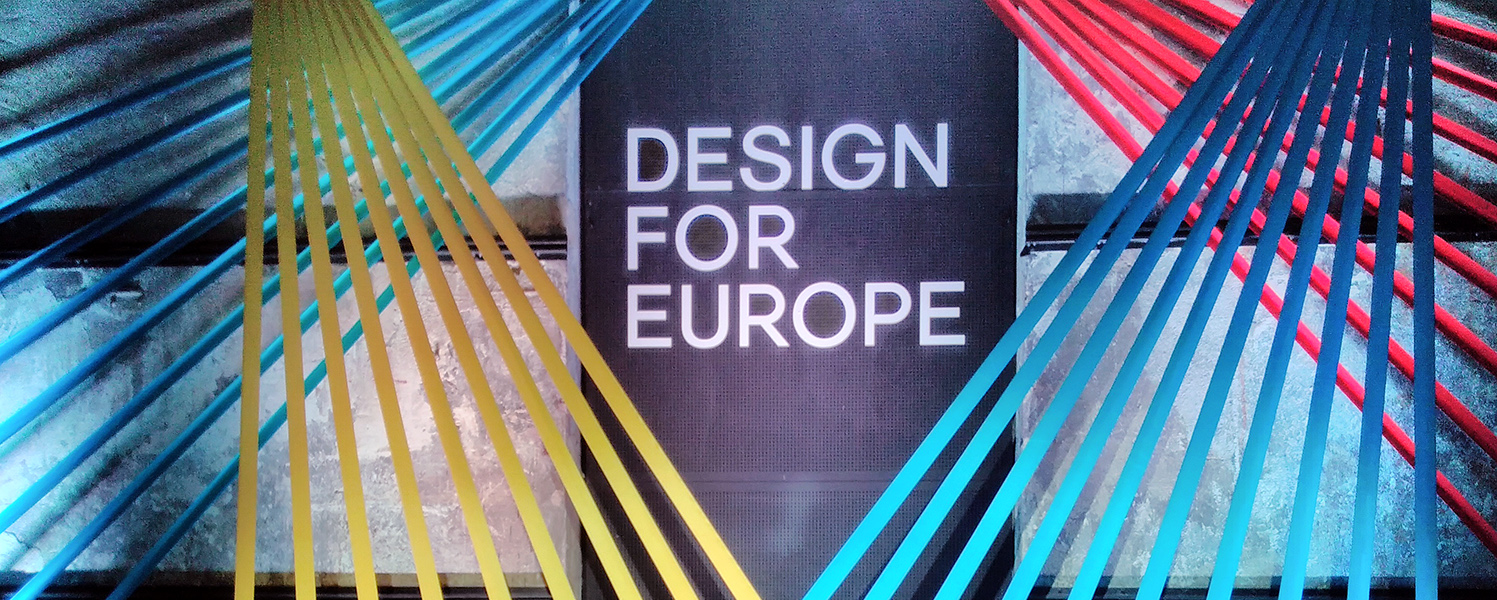
On 06 October, we – Project Manager Päivi Keränen and WP2 leader Emils Rode – participated in the Design for Europe ‘Powering Innovation’ summit in Tallinn. Design for Europe as a 3-year project financed by the European Commission aims to identify, promote and create best practices in design policy and use of design – especially by the public sector.
The audience was well-prepared for the topic and did not need to be explained what design does or convinced of its value added. The four conference panels focused on various angles of design: its economic contribution, its skills, its role as facilitator of innovation, and its societal impact:
Powered to Grow: Productivity and Performance. How design can be harnessed to pioneer, promote and prosper;
Powered by Competence: Design Skills. How design is fast becoming a key skill which is integral to innovation;
Powered Together: Innovation Ecosystems. How a design-led process brings different actors together to create maximum impact;
Powered by Change: Social Innovation. How design helps to address societal challenges and improve lives
A dialogue induced by the topics and discussion at the Summit:
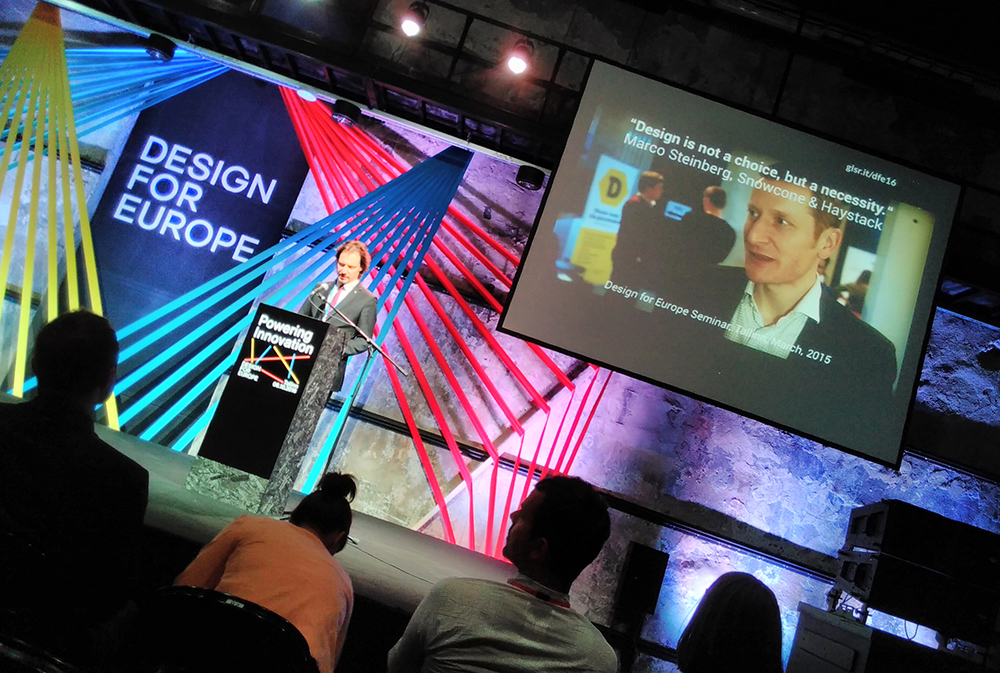 Emils: A national design policy can be a useful framework to streamline and focus various actors and activities, and to present an image of a ‘design country’ – as the summit’s host Estonia tries to do. It can help mobilise the public sector to be more open to design collaborations. However, many successful design countries, like England or Germany, do not have them.
Emils: A national design policy can be a useful framework to streamline and focus various actors and activities, and to present an image of a ‘design country’ – as the summit’s host Estonia tries to do. It can help mobilise the public sector to be more open to design collaborations. However, many successful design countries, like England or Germany, do not have them.
Päivi: It is a strategic choice for the cities and governments whether to apply design in public sphere or not. I have been extremely happy to follow City of Helsinki embrace the design-thinking as a way of developing both the city services and its underlying organisation and is also one of the very first cities to recruit a Chief Design Officer.
Emils: I believe the public sector needs to be always on the lookout to deliver more and better services – and policies – for taxpayers’ money. However, it is conservative by nature, and perhaps rightly so – a country run by designers evokes a ‘1984’-like vision.
Päivi: The Design for Europe Summit certainly showcased a lot examples presented about web based services and combining data from different sources, so I can see what you mean by that. These systems need to be designed of course, but in my mind this is not the essence of the Design. It has more to do with digitalisation. Generally, a designer perhaps aims to serve and induce certain behaviour(s), but in the end the design always completed by the people and how they choose to use it. There is always an element of emergence and surprises – it is definitely not as controlled (or bleak) as in ‘1984’!
Emils: What I meant by the ‘1984’ reference is not so much the total control of society via data, but rather the natural tendency of designers to design and to strive for perfection. Designers are only part of the solution – we also need wise leaders, policy-makers who can make compromises, ‘sell’ ideas to the society and achieve a broad consensus about how we want to live.
Päivi: I agree, varied expertise is absolutely needed to solve urban issues! Nevertheless, in my experience design expertise and methods act as a good adhesive for multidisciplinary collaboration. Currently, the understanding of the potential design-thinking possesses is in many cases still lacking in the urban development process – but this is something that Design for Europe and us in Live Baltic Campus can address and facilitate.
Emils: Design is a risky proposition: there are certain to be dead ends and false leads. This is the tension we have to work within: how to sell (or buy) something which cannot be precisely defined – not a product, but a process, one which may lead to no product at all.
Päivi: I see design-thinking very much as way of dealing with uncertainties and keeping an open mind while solving tricky issues. As the challenges cities face are becoming more and more multifaceted and complex, there are less and less sure fire solutions at hand. Handling the risk requires rapid prototyping and iterative development: with these the outcome is positive regardless whether one specific test run is successful or not – either you win or learn.
Both: With these in mind, it was hardly a surprise that the theme of trust was one the main undercurrents of the event. How to build the trust between different stakeholders, with their individual motivations and goals and how to invoke trust to a process that often seems hard to grasp in the beginning stages? Projects like Design for Europe try to help and facilitate the understanding of design, by collecting and presenting evidence, organising dialogues and workshops, and engaging various national- and EU-level stakeholders.
What are the takeaways for our Live Baltic Campus project then? Our idea to conduct pilot projects seems to fit with design thinking: experimenting, trying things out in practice, even failing, far exceeds producing endless PowerPoint slides. Perhaps we should be more active in emphasising the ‘design’ side of our project and engaging more actively with ‘design’ stakeholders in all our partner regions?
A final thought: could there be a role for design in territorial cooperation programmes such as Interreg Central Baltic – and what could it be?
Text: Emils Rode and Päivi Keränen, photos Päivi Keränen







